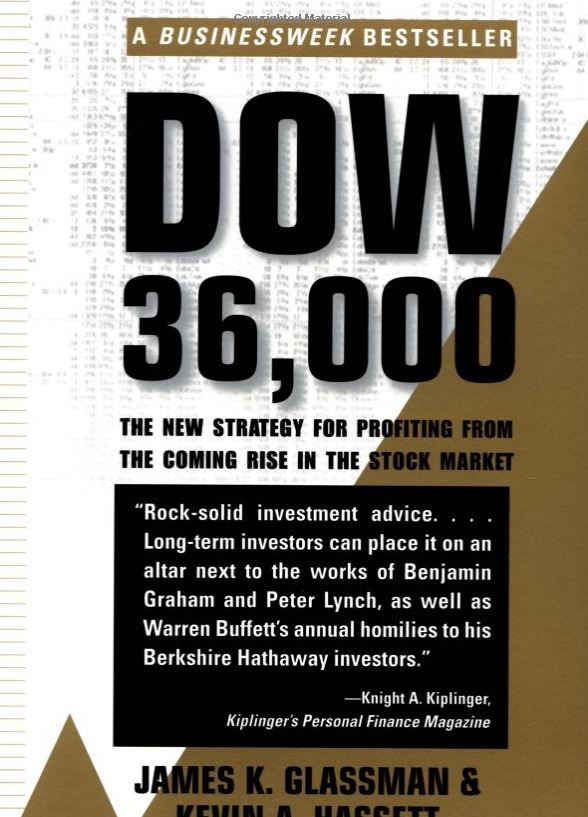 In 1999, in the midst of the dot-com boom, Kevin Hassett and James Glassman published their book Dow 36,000. Hassett has made significant contributions in the world of economics. He served as a senior economist at the Federal Reserve Board and has a Ph.D in economics from the University of Pennsylvania. That’s impressive.
In 1999, in the midst of the dot-com boom, Kevin Hassett and James Glassman published their book Dow 36,000. Hassett has made significant contributions in the world of economics. He served as a senior economist at the Federal Reserve Board and has a Ph.D in economics from the University of Pennsylvania. That’s impressive.
However, Dow 36,000 is now seen as the ultimate example of market euphoria and, in retrospect, was a great sell signal. Developing a contrary opinion in real time isn’t easy for an investor. It’s hard not to get caught up in the euphoria or pessimism that prevails at any given time in the media.
Another problem with adopting a contrary opinion is that big market shifts don’t come along all that often. The average bull market is around 3.7 years according to my calculations. In addition to that average time span for a bull run, you also need to consider how long it takes for a correction that’s deep enough to push stock prices into bear market territory. Here we are in September of 2013 with the market bottom reached in March 2009 — all but a memory from 4 1/2 years ago.
Students of the stock market must keep an eye out for “irrational exuberance.” Real estate has been making a strong comeback, but it is probably not irrational, since the cost of constructing a home plus the value of the land on which it is built does not exceed most sales prices, at least in Nashville.
Perhaps the disparity between the price-to-earnings ratio of large stocks and small stocks is currently a little irrational. Small stocks are valued relatively higher than large stocks. That is the reason that I am exercising my contrarianism and selling a few small stocks with the plan to replace them with large stocks characterized by favorable value characteristics.
Certain information contained in this presentation is based upon forward-looking statements, information and opinions, including descriptions of anticipated market changes and expectations of future activity. The manager believes that such statements, information and opinions are based upon reasonable estimates and assumptions. However, forward-looking statements, information and opinions are inherently uncertain and actual events or results may differ materially from those reflected in the forward-looking statements. Therefore, undue reliance should not be placed on such forward-looking statements, information and opinions.



